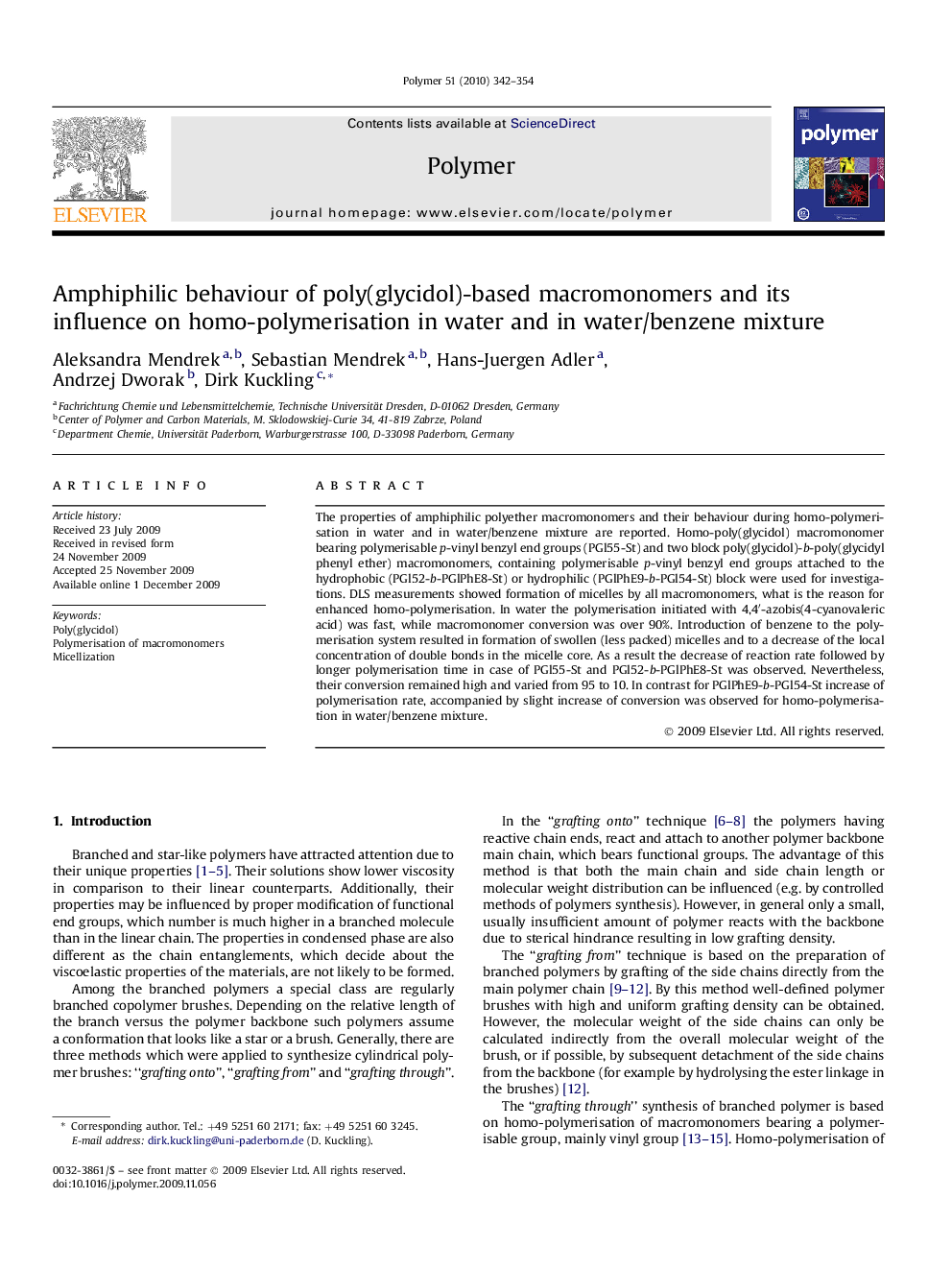| کد مقاله | کد نشریه | سال انتشار | مقاله انگلیسی | نسخه تمام متن |
|---|---|---|---|---|
| 5185335 | 1381075 | 2010 | 13 صفحه PDF | دانلود رایگان |

The properties of amphiphilic polyether macromonomers and their behaviour during homo-polymerisation in water and in water/benzene mixture are reported. Homo-poly(glycidol) macromonomer bearing polymerisable p-vinyl benzyl end groups (PGl55-St) and two block poly(glycidol)-b-poly(glycidyl phenyl ether) macromonomers, containing polymerisable p-vinyl benzyl end groups attached to the hydrophobic (PGl52-b-PGlPhE8-St) or hydrophilic (PGlPhE9-b-PGl54-St) block were used for investigations. DLS measurements showed formation of micelles by all macromonomers, what is the reason for enhanced homo-polymerisation. In water the polymerisation initiated with 4,4â²-azobis(4-cyanovaleric acid) was fast, while macromonomer conversion was over 90%. Introduction of benzene to the polymerisation system resulted in formation of swollen (less packed) micelles and to a decrease of the local concentration of double bonds in the micelle core. As a result the decrease of reaction rate followed by longer polymerisation time in case of PGl55-St and PGl52-b-PGlPhE8-St was observed. Nevertheless, their conversion remained high and varied from 95 to 10. In contrast for PGlPhE9-b-PGl54-St increase of polymerisation rate, accompanied by slight increase of conversion was observed for homo-polymerisation in water/benzene mixture.
Journal: Polymer - Volume 51, Issue 2, 21 January 2010, Pages 342-354